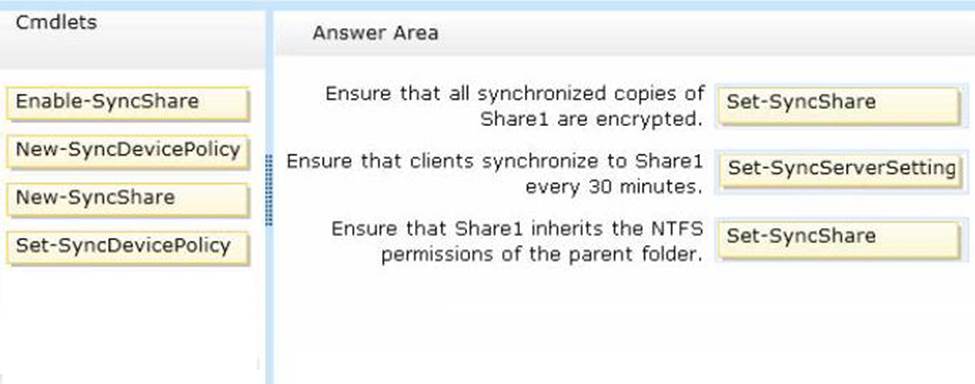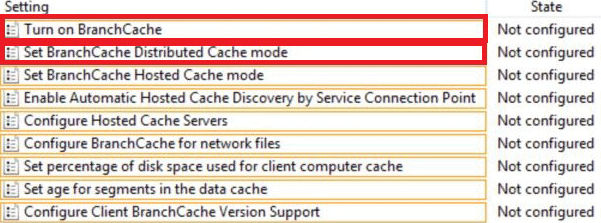Microsoft 70-412 Configuring Advanced Windows Server 2012 Services Online Training
Microsoft 70-412 Online Training
The questions for 70-412 were last updated at Oct 17,2025.
- Exam Code: 70-412
- Exam Name: Configuring Advanced Windows Server 2012 Services
- Certification Provider: Microsoft
- Latest update: Oct 17,2025
Your network contains 20 iSCSI storage appliances that will provide storage for 50 Hyper-V hosts running Windows Server 2012 R2.
You need to configure the storage for the Hyper-V hosts. The solution must minimize administrative effort.
What should you do first?
- A . Install the iSCSI Target Server role service and configure iSCSI targets.
- B . Install the iSNS Server service feature and create a Discovery Domain.
- C . Start the Microsoft iSCSI Initiator Service and configure the iSCSI Initiator Properties.
- D . Install the Multipath I/O (MPIO) feature and configure the MPIO Properties.
Your network contains an Active Directory domain named contoso.com. The domain contains a file server named Server1 that runs Windows Server 2012 R2. All client computers run Windows 8. You need to configure a custom Access Denied message that will be displayed to users when they are denied access to folders or files on Server1.
What should you configure?
- A . A classification property
- B . The File Server Resource Manager Options
- C . A file management task
- D . A file screen template
DRAG DROP
You have a server that runs Windows Server 2012 R2. You create a new work folder named Share1.
You need to configure Share1 to meet the following requirements:
• Ensure that all synchronized copies of Share1 are encrypted.
• Ensure that clients synchronize to Share1 every 30 minutes.
• Ensure that Share1 inherits the NTFS permissions of the parent folder.
Which cmdlet should you use to achieve each requirement? To answer, drag the appropriate cmdlets to the correct requirements. Each cmdlet may be used once, more than once, or not at all. You may need to drag the split bar between panes or scroll to view content.
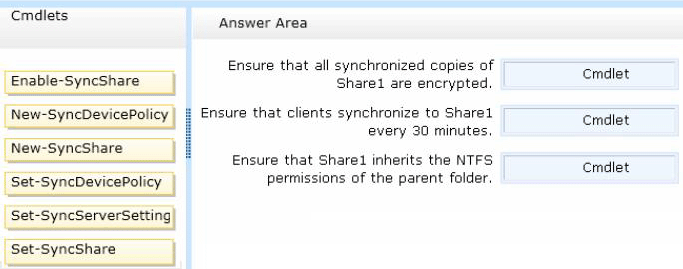
HOTSPOT
Your network contains an Active Directory domain named contoso.com. All client computers run Windows 8 Enterprise. You have a remote site that only contains client computers. All of the client computer accounts are located in an organizational unit (OU) named Remote1. A Group Policy object (GPO) named GPO1 is linked to the Remote1 OU. You need to configure BranchCache for the remote site.
Which two settings should you configure in GPO1? To answer, select the two appropriate settings in the answer area.
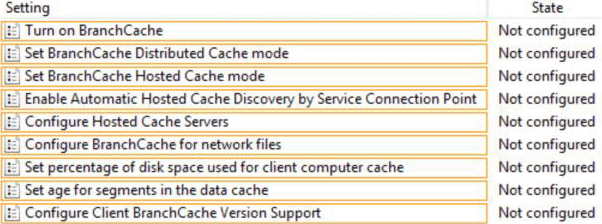
HOTSPOT
Your network contains an Active Directory domain named contoso.com. All client computers run Windows 8 Enterprise. You have a remote site that only contains client computers. All of the client computer accounts are located in an organizational unit (OU) named Remote1. A Group Policy object (GPO) named GPO1 is linked to the Remote1 OU. You need to configure BranchCache for the remote site.
Which two settings should you configure in GPO1? To answer, select the two appropriate settings in the answer area.

HOTSPOT
Your network contains an Active Directory domain named contoso.com. All client computers run Windows 8 Enterprise. You have a remote site that only contains client computers. All of the client computer accounts are located in an organizational unit (OU) named Remote1. A Group Policy object (GPO) named GPO1 is linked to the Remote1 OU. You need to configure BranchCache for the remote site.
Which two settings should you configure in GPO1? To answer, select the two appropriate settings in the answer area.

HOTSPOT
Your network contains an Active Directory domain named contoso.com. All client computers run Windows 8 Enterprise. You have a remote site that only contains client computers. All of the client computer accounts are located in an organizational unit (OU) named Remote1. A Group Policy object (GPO) named GPO1 is linked to the Remote1 OU. You need to configure BranchCache for the remote site.
Which two settings should you configure in GPO1? To answer, select the two appropriate settings in the answer area.

You have a server named Server1 that runs Windows Server 2012 R2.
The storage on Server1 is configured as shown in the following table.
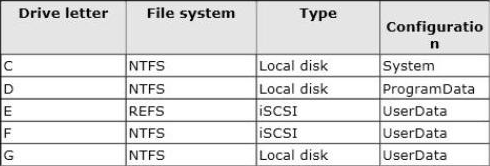
You plan to implement Data Deduplication on Server1.
You need to identify on which drives you can enable Data Deduplication.
Which three drives should you identify? (Each correct answer presents part of the solution. Choose three.)
- A . C
- B . D
- C . E
- D . F
- E . G
Your network contains an Active Directory domain named contoso.com. All servers run Windows Server 2012 R2.
You are creating a central access rule named TestFinance that will be used to audit members of the Authenticated Users group for access failure to shared folders in the finance department.
You need to ensure that access requests are unaffected when the rule is published.
What should you do?
- A . Add a User condition to the current permissions entry for the Authenticated Users principal.
- B . Set the Permissions to Use the following permissions as proposed permissions.
- C . Add a Resource condition to the current permissions entry for the Authenticated Users principal.
- D . Set the Permissions to Use following permissions as current permissions.
You create a new virtual disk in a storage pool by using the New Virtual Disk Wizard. You discover that the new virtual disk has a write-back cache of 1 GB.
You need to ensure that the virtual disk has a write-back cache of 5 GB.
What should you do?
- A . Detach the virtual disk, and then run the Resize-VirtualDisk cmdlet.
- B . Detach the virtual disk, and then run the Set-VirtualDisk cmdlet.
- C . Delete the virtual disk, and then run the New-StorageSubSystemVirtualDisk cmdlet.
- D . Delete the virtual disk, and then run the New-VirtualDisk cmdlet.
Latest 70-412 Dumps Valid Version with 448 Q&As
Latest And Valid Q&A | Instant Download | Once Fail, Full Refund

